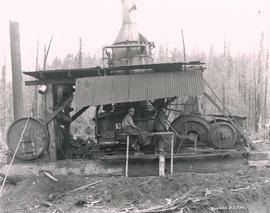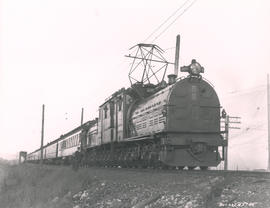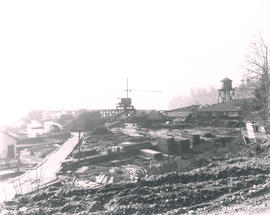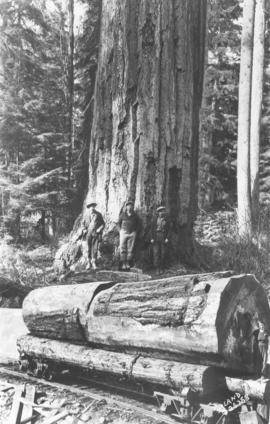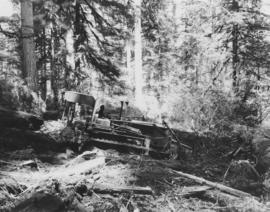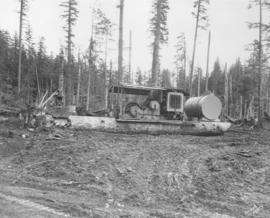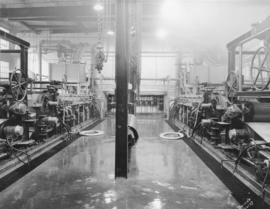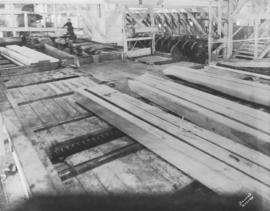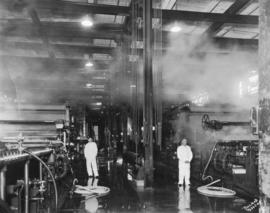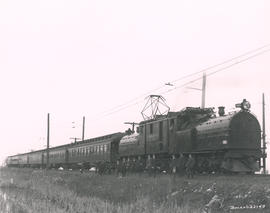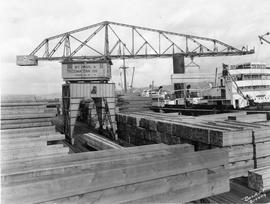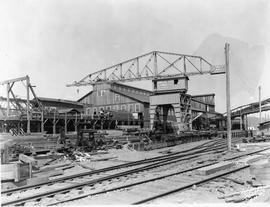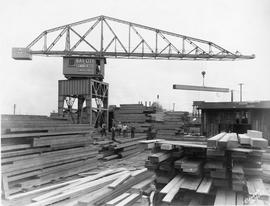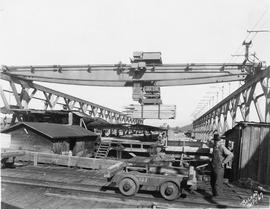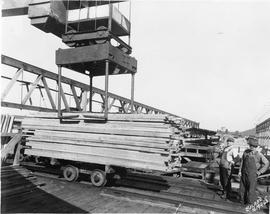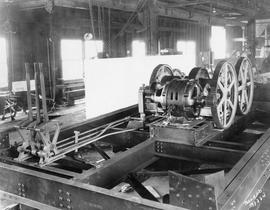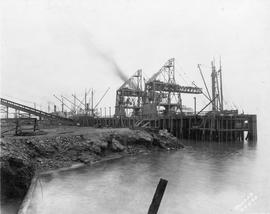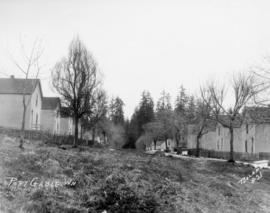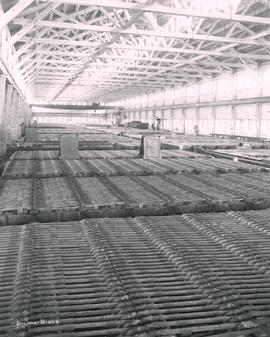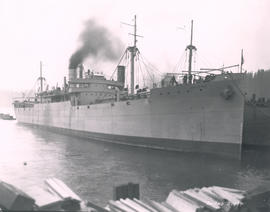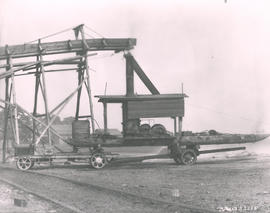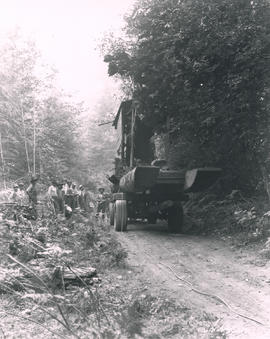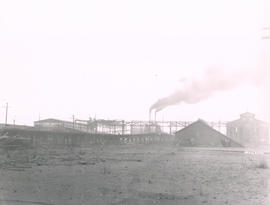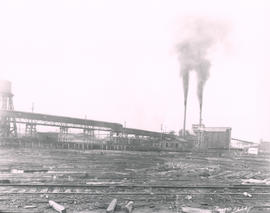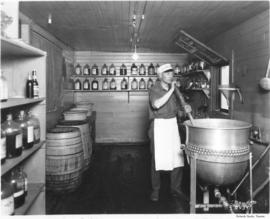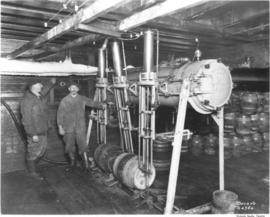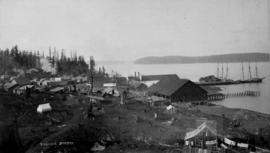- Item
- 1920-03-02
Part of Marvin Boland Photographs
In March of 1920, a steam donkey on a sled was photographed for the West Fork Logging Co. The donkey was used for pulling logs in from the woods. In its simplest form, a donkey was just a steam engine with a drum and a steel cable. The winch was used to pull in logs or load them. In this case, the boiler is mounted, along with the drums, on a sled to make the unit portable. The steam donkey replaced the logging horses and oxen with the power of steam. It was faster, cheaper and more reliable than animals. The West Fork Logging Co. was located in Mineral, about 14 miles north of Morton in Lewis County. It was owned and operated by L.T. Murray. G75.1-093; TPL-9856 (Labbe & Goe, Railroads in the Woods)
West Fork Logging Co. (Mineral); Lumber industry--1920-1930; Steam donkeys; Donkey engines;
